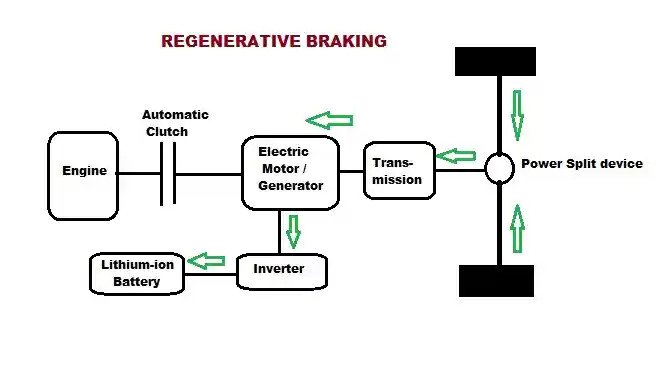
Regenerative braking is a cutting-edge technology that is transforming the way we brake. Traditional braking systems waste kinetic energy in the form of heat, which is dissipated into the environment, resulting in energy loss and reduced fuel efficiency. Regenerative braking, on the other hand, allows vehicles to recover this energy by converting it into electrical energy, which can be used to power the vehicle’s electrical systems or stored in a battery for later use.
This technology has significant advantages for the automotive industry, particularly in the development of electric and hybrid vehicles. These braking systems improve fuel efficiency, extend the range of electric vehicles, and reduce carbon emissions. In this article, we’ll explore the science behind regenerative braking, its benefits, and how it’s transforming the automotive industry.
What Is Regenerative Braking in Electric Vehicles?
Regenerative braking is a technology that captures the kinetic energy of a vehicle during braking and converts it into electrical energy. This energy is then stored in the vehicle’s battery and can be used to power the car’s electrical components, such as the lights and air conditioning.
How Does Regenerative Braking Work?
Regenerative braking is a system that converts kinetic energy into electrical energy during braking. The technology works by using the vehicle’s electric motor as a generator, which produces electricity when the vehicle decelerates or stops. The electricity produced by the generator is stored in a battery, which can be used to power the vehicle’s electrical systems or the motor during acceleration.

When a vehicle is in motion, it has kinetic energy that is proportional to its speed and mass. When the brakes are applied, the kinetic energy is converted into heat energy through friction between the brake pads and the rotors, resulting in energy loss. In a regenerative braking system, the electric motor is used to slow down the vehicle by converting the kinetic energy into electrical energy, which is stored in a battery or used to power the vehicle’s electrical systems.
Why Regenerative Braking Matters
Regenerative braking is an important technology because it can help reduce the carbon footprint of vehicles. By capturing energy that would otherwise be lost during braking, regenerative braking can help reduce the amount of energy that needs to be generated to power the vehicle. This can result in lower greenhouse gas emissions and a cleaner environment.
In addition, regenerative braking is an important step towards more sustainable transportation. As more and more vehicles adopt regenerative braking, the demand for fossil fuels will decrease, and the demand for renewable energy sources, such as wind and solar, will increase.
Benefits of Regenerative Braking
Regenerative braking has several benefits, including:
Improved fuel efficiency: By recovering the energy lost during braking, regenerative braking systems can improve fuel efficiency and reduce energy waste.
Extended range for electric vehicles: It can help in extending the range of electric vehicles by increasing their efficiency and reducing their dependence on battery power.
Reduced carbon emissions: Regenerative braking systems can reduce carbon emissions by improving fuel efficiency and reducing energy waste.
Reduced brake wear: Regenerative braking systems can reduce wear on traditional brakes, leading to longer brake life and reduced maintenance costs.
Applications of Regenerative Braking
Regenerative braking has a wide range of applications, including:
Hybrid vehicles: It is a critical technology for hybrid vehicles, which rely on the recovery of energy lost during braking to improve fuel efficiency.
Electric vehicles: This is essential for electric vehicles, which have limited range and rely on energy recovery to extend their driving range.
Trains: Used in trains to reduce energy waste and improve efficiency.
Elevators: Used in elevators to reduce energy consumption and improve efficiency.
You May Like: How to Apply for Electric Vehicle Subsidy
Conclusion
Regenerative braking is a game-changing technology that is revolutionizing the way we brake. By recovering energy lost during braking, these braking systems can improve fuel efficiency, reduce carbon emissions, and extend the range of electric vehicles. This technology has numerous applications, including hybrid and electric vehicles, trains, and elevators.
FAQs
Regenerative braking can be used in most vehicles, including hybrid and electric vehicles. However, it may not be suitable for vehicles that require frequent braking or heavy loads.
Yes, regenerative braking can reduce brake wear by using the electric motor to slow down the vehicle instead of the traditional brakes.
The amount of energy recovered through regenerative braking varies depending on the vehicle’s speed, vehicle weight, and the efficiency of the braking system.
Image Source: Cars.com illustration by Paul Dolan







